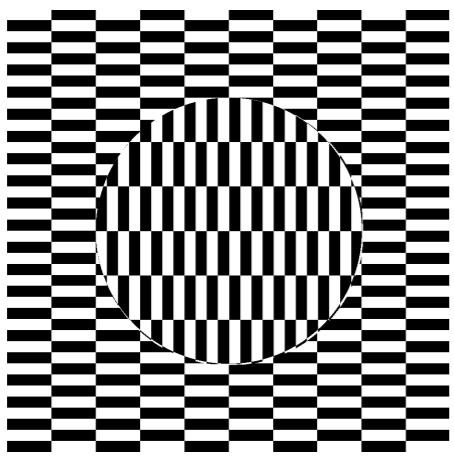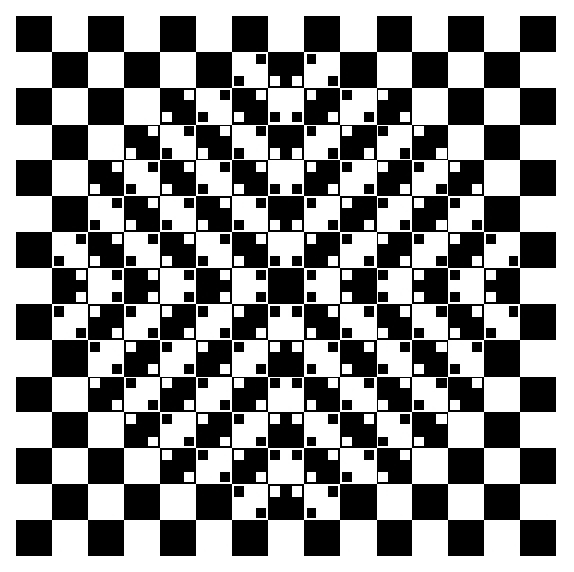Polyrhythms and rhythmic ambiguity
Over the coming week I’m intending to experiment with polyrhythms; specifically, using polyrhythms to give the impression of multiple time signatures or tempi existing at once, or subtle shifts between the two.
An example of this is shown starting around 2:34 in this video by the excellent Mal Webb:
Shifting perception of the faster pulses between triplets, eighth notes, and other divisions, while ensuring the patterns fit in the larger structure really gives a sense of perspective shifts that I could exploit in my work.
This Tim Exile track uses similar shifts:
Notable times: 1:17, 2:40, 4:23.
Obviously I’ll be using such shifts in more subtle ways, by gradually fading or filtering each different perspective in and out, or having a certain “anchor” element gradually shift between two emphasis states, much like in this Autechre track:
In this case it’s the hihats that mostly dictate how the rhythm is perceived, fading between a fast 16th note pattern and a slower pattern which can either be perceived as dotted eighth notes, or quarter notes accentuating a triplet pattern.
Going further down the rabbit hole, and back to Mal Webb’s work, is this incredibly mathematical yet subtle exploration of rhythmic shifting:
This is less of a polyrhythm and more akin to polymeter, but has a similar mind-bending quality. The moments where the echoes mathematically align and turn into a rhythm are definitely something I want to explore in the coming weeks. In fact, I’ve explored similar timing-related “cascades” in the past:
.. though not as refined. I think I still have the project file for that track somewhere though, so it may be worth revisiting.
Pharos Designer
I’m trying to dig into the specifics of the Pharos Designer project file format, in the hopes that I can somehow generate some lighting patterns myself, but I’m unable to decode it. I’ve currently tried using a hex editor but my guess is that it’s a form of compressed file.
I will continue to look into it over the next few days, however I’ll need to prepare for having to do the hard work myself and manually create the lighting sequences.
Browser-based works
Something I’ve considered for my browser-based works is to make them either not interactive at all, or interactive in a non-direct way, ie. the user influences the work in an abstract way in order to push it towards a certain condition where the visuals and audio are generated. This is partly going back to my Bounce work from last year, where the interaction is much less direct than my more recent pieces Dungeon / Field.
My interpretation of Darrin’s comments about Bounce being a kinetic/haptic experience, observing the results of a physics engine, is that of the user watching the parameters they set (ie. the position of the barriers, speed and density of the bouncing balls) play out in an unknown yet consistent way. It’s similar to why I enjoy using generative algorithms to make music; the sense of giving up some degree of control, yet still being able to influence the system.
Perhaps the three individual pieces I create for this work can represent three different levels of interactivity. From something like Wander being simply for observation, to Bounce / Field / Phase where the user observes the result of set parameters, to the near fully manual Window / Dungeon / Repeat works, which are closer to traditional sequencers or loopers.
That’s a moiré
I’ve touched on it in previous blog posts, but something to explore for my browser-based works is the idea of moiré patterns. This could be an interesting way to represent any polyrhythmic relationships in the audio; not necessarily directly representing them, but some kind of display where a correlation could be drawn between the two. Much with polyrhythmic audio, moiré patterns are something I’ve explored briefly in the past, so revisiting them and contextualising/pairing them with audio would be an interesting idea.
Even the overlaying of two simple dot matrices of slightly different sizes and rotations (Hermann 2012 p. 11) provides some interesting results. A simple browser-based work where the user can rotate / scale one dot matrix overlaid on another, static, matrix, with polyrhythmic sequencing / tonal relationships to represent that, could be a worthwhile concept to explore. It’s a very minimal concept, but in my opinion the best hypnotic artworks are minimal. It could include various different dot configurations, which the user could switch between using mouse clicks or key presses.
Optical illusions
I found a very extensive website of optical illusions (Kitaoka 2021), which also contains links to the author’s papers on various illusions and their mechanics (e.g. Kitaoka & Ashida 2003). This will be a valuable resource for my browser-based works.
Particularly interesting is the Ouchi illusion (Ouchi 1977), which is quite an extreme example, considering the very basic nature of the image:

Researching the mechanics behind this image reveals that random eye movements independently stimulate neurons depending on the horizontal and vertical placement, and thus the “disk” appears to jitter or move independently to the background (Barile & Weisstein n.d.).
Part of my experimentation in the coming week will be attempting to re-create some of the examples presented on Kitaoka’s site in p5js, and adjusting certain parameters with the attempt to find the “breaking point” of the illusions. Something like the following (Kitaoka 1998) would be fun to parameterise in p5js:

References
Barile, M & Weissten, E n.d., Ouchi illusion, Wolfram MathWorld, accessed 30 August 2021, <https://mathworld.wolfram.com/OuchiIllusion.html>.
Hermann, K 2012, ‘Periodic overlayers and moiré patterns: theoretical studies of geometric properties’, Journal of Physics: Condensed Matter, vol. 24, no. 31.
Kitaoka, A 1998. A bulge, digital image, Ritsumeikan University, viewed 30 August 2021, <http://www.ritsumei.ac.jp/~akitaoka/Bulge02c.jpg>.
Kitaoka, A & Ashida, H 2003, ‘Phenomenal Characteristics of the Peripheral Drift Illusion’, VISION, vol. 15, no. 4, p. 261–262.
Kitaoka, A 2021, Akiyoshi’s illusion pages, Ritsumeikan University, viewed 25 August 2021, <http://www.ritsumei.ac.jp/~akitaoka/index-e.html>.
Ouchi, H 1977, ‘Japanese Optical and Geometrical Art’, 1st ed., Dover Publications, Mineola, NY, USA.